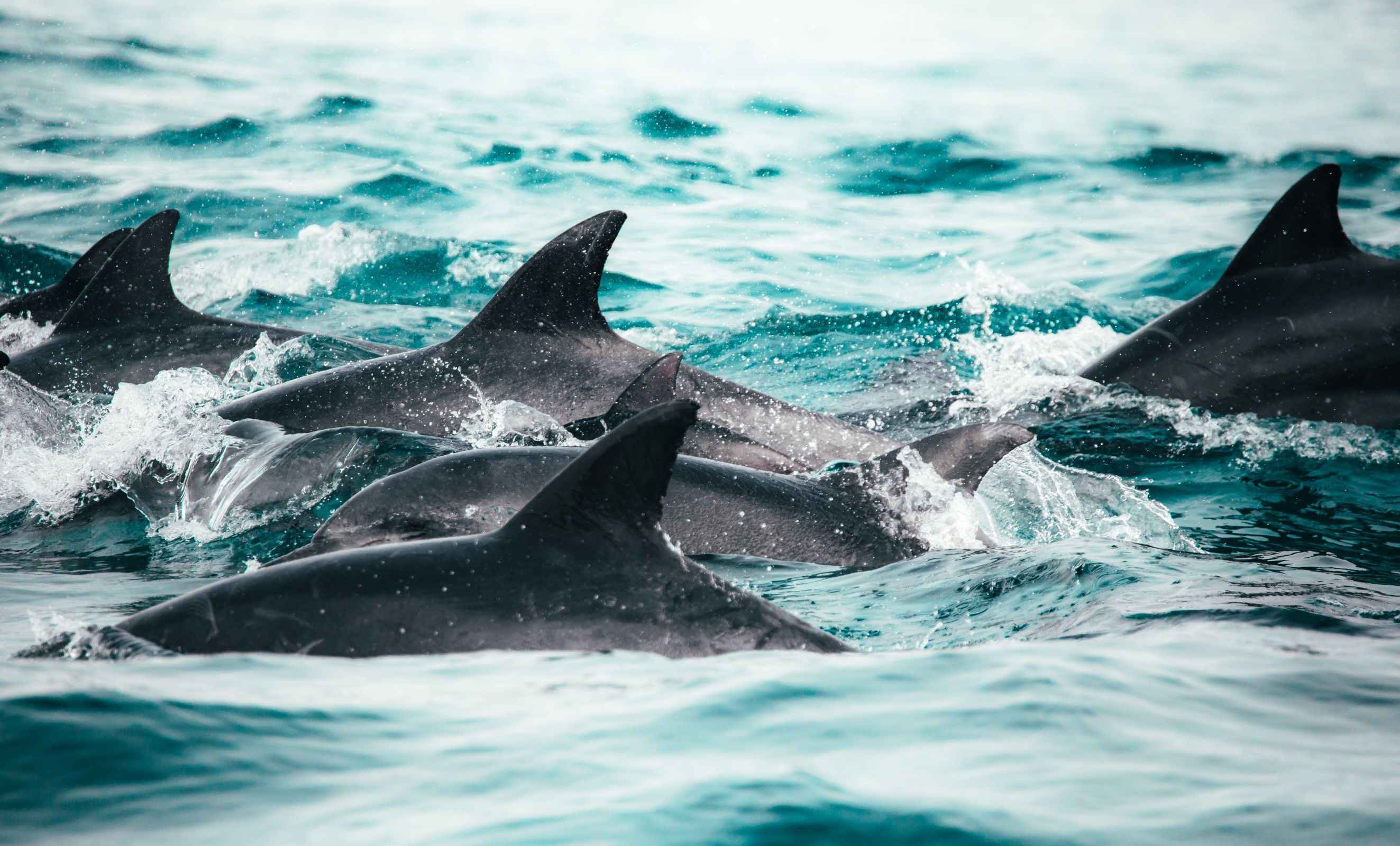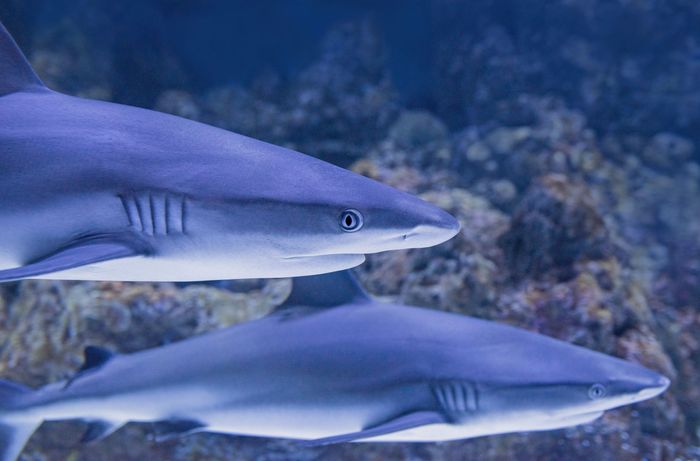Difference Between the Way Dolphins and Sharks Swim
Dolphins and sharks: friends or enemies? Do they swim the same way or not? We have all the answers.

Two of the most popular ocean animals anyone is familiar with are dolphins and sharks. Both known for having a streamlined body and triangular dorsal fin, many people may get confused by just seeing the fin poking out of the ocean’s surface. Sometimes, this may cause panic because people automatically think it is a shark making its way in the direction of surfers or swimmers. Every so often, the alleged shark turns out to be just a playful dolphin. Despite having these shared characteristics, a closer look and knowledge about their swimming behavior will reveal which exactly is swimming nearby.
The movies and TV series in the past like “Jaws” and “Flipper” have influenced people’s perception towards sharks and dolphins, and there seems to be a constant debate on different topics about these two. Some of which are that sharks and dolphins are enemies and that they never stay on the same spot together. There are many other misconceptions aside from this, so let’s find out below the actual difference between sharks and dolphins, especially when swimming.

Appearance, Habitats, and Eating Habits of Sharks and Dolphins
Disregarding the snout, sharks and dolphins may sometimes look alike. Generally, they both have countershading, where their bellies appear lighter in color than their backs. This sharp contrast in their color helps these two predators blend into the aquatic environment to catch their prey. While they also both have dorsal and pectoral fins, their tails are different. Sharks’ tail fins are vertical, which aids them to swim in a side-to-side motion. On the contrary, dolphins’ tails are horizontal, and this allows them to swim in up and down motions. Another obvious physical distinction between the two is the presence of the side gills, which sharks have and dolphins don’t. Instead of breathing through the gills like sharks, dolphins use their blowhole on the top of their head rather.
Since dolphins are mammals and sharks are fish, these two have their preferred locations in the ocean. Unlike sharks that spend most of their life underwater, dolphins stay where they can easily resurface on the water to breathe air. Depending on the species though, some sharks dwell in shallow coastal waters or even in freshwater.
Known as opportunistic carnivores, both dolphins and sharks hunt for their diet in these waters. They eat fish, squid, shrimp, and crustaceans that come across their paths. However, some shark species also eat other sharks, marine mammals, or plankton.

Swimming Behavior: Sharks Versus Dolphins
Unlike other fish, sharks’ swimming ability is limited. With their fins only used for balance, most sharks like the great white move in the water using their tail. Others like whale sharks move their bodies from side to side to propel themselves through the water. Since their pectoral fins are not capable of bending upwards, sharks can only swim in a forward motion. For them to move backward, they use gravity to allow themselves to fall. They must also twist sidewards to not bump on something because they cannot just stop suddenly when they need to. If they don’t keep swimming, they tend to sink.
The average swimming speed of sharks across all species is 5 miles per hour, but when hunting, they can go up to 12mph. Some sharks even swim beyond this, depending on the species or where the shark lives. Fast-swimming sharks commonly found in the open ocean like bull sharks and great whites can swim up to 25 mph. The difference in sharks’ swimming speed can be attributed to their habitat and food requirement. The deep-water sharks and filter-feeders, for example, swim at a slow speed to conserve their energy due to their slow metabolism.

Instead of moving their bodies from side to side, dolphins move in up and down motion to be able to swim forward. Being classified as mammals, dolphins have many adaptation features that make them excellent swimmers. This includes having minimal hair on their body, blubber, and external appendages that all aid in giving them better control and speed when swimming.
Dolphins’ bodies are highly composed of fat (also called blubber) that makes them more buoyant in the water. Buoyancy is important for them to easily go on the surface to breathe some air and save energy. Their bodies that also contain much less hair than other mammals help them in propelling through the water with less friction. With that, they can achieve a high swimming speed of up to 21mph when catching prey or escaping some danger, and they can sustain this speed for up to 1,500 meters.
This quick swimming speed can be attributed primarily to the powerful tails of the dolphins. Moving their tails forcefully can help them propel quicker through the water. According to a study, their tail flukes essentially act as wings that generate a forward lift force on both up and down strokes. It is due to this flexibility in their tail flukes that maintain an excellent swimming action across different speeds.
Compared to sharks, dolphins can change directions in the water more smoothly and halt abruptly. Through their short flippers that act as brakes, they can stop whenever they need to, and they can do impressive movements like flipping, breaching, and leaping from the water, which everyone adores watching.
There Are No Sharks Where Dolphins Are: Truth or Myth?
It is a piece of common knowledge to many that sharks can never be found in the areas where dolphins swim. This brings the notion that it is safe to surf or swim in pods of dolphins swimming close by. Unfortunately, this is only a myth. A shark expert from the University of San Diego confirmed this by explaining that the carnivorous nature of sharks and dolphins allows them to sometimes hunt on the same prey on the same spot.
This false notion stems from television shows such as Flipper that convey that these creatures are natural enemies and that sharks are afraid of dolphins. This is partly true though as dolphins antagonize sharks at times when they feel threatened even if oftentimes they swim side by side. Specifically, dolphins fight sharks by aggressively slamming their pointed snout into the belly of the shark. Sometimes, this encounter leaves the sharks seriously bruised as they swim away.




